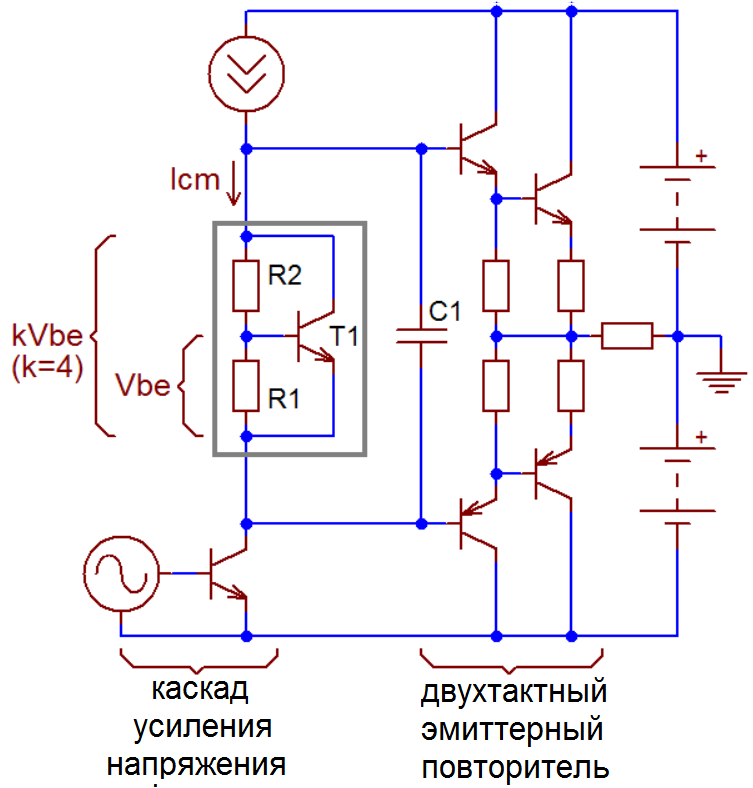rubber diode on:
[Wikipedia]
[Google]
[Amazon]
 In
In
 In
In electronics
The field of electronics is a branch of physics and electrical engineering that deals with the emission, behaviour and effects of electrons using electronic devices. Electronics uses active devices to control electron flow by amplification ...
, a rubber diode or V multiplier is a bipolar junction transistor
A bipolar junction transistor (BJT) is a type of transistor that uses both electrons and electron holes as charge carriers. In contrast, a unipolar transistor, such as a field-effect transistor, uses only one kind of charge carrier. A bipolar ...
circuit that serves as a voltage reference
A voltage reference is an electronic device that ideally produces a fixed (constant) voltage irrespective of the loading on the device, power supply variations, temperature changes, and the passage of time. Voltage references are used in power supp ...
. It consists of one transistor and two resistor
A resistor is a passive two-terminal electrical component that implements electrical resistance as a circuit element. In electronic circuits, resistors are used to reduce current flow, adjust signal levels, to divide voltages, bias active el ...
s, and the reference voltage across the circuit is determined by the selected resistor values and the base-to-emitter voltage (V) of the transistor. The circuit behaves as a voltage divider
In electronics, a voltage divider (also known as a potential divider) is a passive linear circuit that produces an output voltage (''V''out) that is a fraction of its input voltage (''V''in). Voltage division is the result of distributing the in ...
, but with the voltage across the base-emitter resistor determined by the forward base-emitter junction voltage.
It is commonly used in the biasing
In electronics, biasing is the setting of DC (direct current) operating conditions (current and voltage) of an active device in an amplifier. Many electronic devices, such as diodes, transistors and vacuum tubes, whose function is processing ...
of push-pull output stages of amplifier
An amplifier, electronic amplifier or (informally) amp is an electronic device that can increase the magnitude of a signal (a time-varying voltage or current). It may increase the power significantly, or its main effect may be to boost the v ...
s, where one benefit is thermal compensation: The temperature-dependent variations in the multiplier's V, approximately -2.2 mV/ºC, can be made to match variations occurring in the V of the power transistors by mounting to the same heat sink
A heat sink (also commonly spelled heatsink) is a passive heat exchanger that transfers the heat generated by an electronic or a mechanical device to a fluid medium, often air or a liquid coolant, where it is dissipated away from the device, th ...
. In this context, it is sometimes called a bias servo.
References
Semiconductors {{Electronics-stub